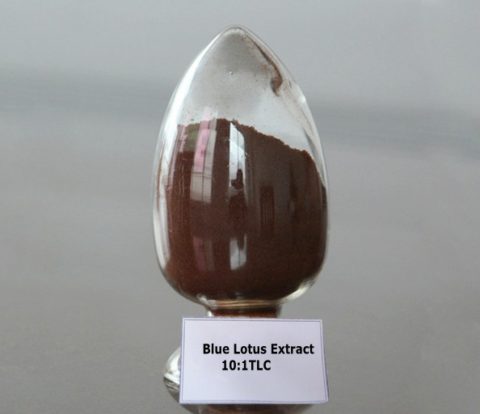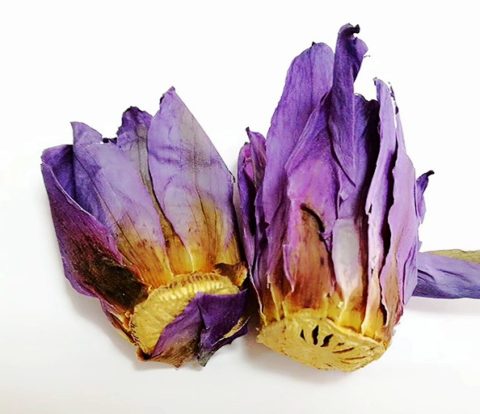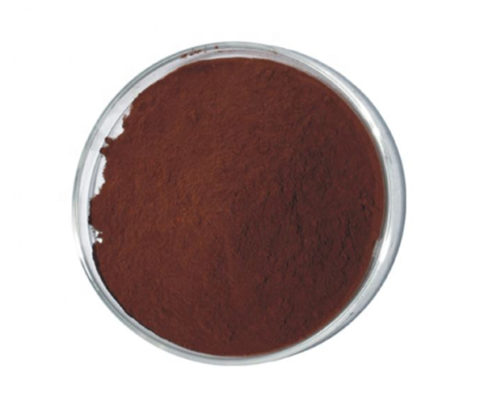
Sacred Blue Lotus Extract Powder 10:1, 20:1, 50:1 TLC
The blue lotus has a pleasant smell. It is used as a seasoning for perfume, oil and aromatherapy. It can also be used as a mild sedative. As we all know, it has spiritual activity. It contains alkaloids such as aporphine and nucleoside, which have the function of strengthening yang and detoxifying.
Blue Lotus Extract Powder 10:1, 20:1, 50:1 TLC
【Botanical Source】: Nymphaea caerulea, Nymphaea nouchali var, Nymphaea stellata, Nymphaea capensis
【Family】: Nymphaeaceae
【Common name】 : Blue Lotus, Blue Water Lily, Sacred Blue Lotus, Blue Lily of the Nile, Blue Water Lily, Egytian Lotus, Egytian Lily, Blue Lotus of the Nile
【Specification】: 10:1,20:1, 50:1
【Test method】: TLC
【Appearance】: Brown fine powder
【Particle size】: 100% over 80 meshes
【Packing】: 25kg/fiber drum or aluminium foil bag
【Storage Conditions】: Stored in dry, cool and well ventilated place
【Self life】:Valid for 24 months since manufacturing date.

Harvest the Fresh Blue Lotus
Blue lotus extract adopts Nymphaea Caerulea as the raw materails, commonly known as blue lotus or Egyptian blue lotus, , is a water lily in the genus Nymphaea. The image of blue lotus can be found in the description of papyrus and tombs in ancient Egypt. It is speculated that this flower was used as part of the healing and Shamanism rituals in ancient Egyptian culture, dating back to the 14th century B.C.. Today, Blue Lotus is used as a sleep aid and anxiety reliever, but it is also described as a mild stimulant. The psychoactive effects of this flower are most often attributed to two alkaloids, apomorphine and nuciferine.
Apomorphine is a non-selective dopamine receptor agonist that activates serotonin receptors and alpha-adrenergic receptors. Since the end of the 19th century, it has been used as a sedative and hypnotic medicine to treat insomnia, depression or schizophrenia. It has been used to treat erectile dysfunction and is sold under trademarks upriama and ixense. In 1951, it was reported that the drug successfully treated Parkinson’s disease after subcutaneous injection of 0.5 to 1.0 mg (Schwab, Amado and Letterwin, 1951). It is also used to treat alcohol and morphine addiction. In veterinary medicine, it is used to induce vomiting (Scherkl, Hashem and Frey 1990). Others believe that apomorphine can play a role in the treatment of Alzheimer’s disease (Okun and Foote 2010; Ribari_2012).
Nuciferine is an antagonist at 5-ht2a, 5-HT2C and 5-ht2b, a reverse agonist at 5-ht7, a partial agonist at d2, d5 and 5-ht6, an agonist at 5-HT1A and D4 receptors, and inhibits dopamine transporters. Behavioral effects in rats include hydrogen peroxide, hexose-barbiturate hypnotic enhancement, morphine analgesia and anticonvulsant effects. It has been suggested that nuciferine may have potential therapeutic applications as an antipsychotic drug and vascular diseases associated with abnormal vasoconstriction.
Chemical Component
As part of an ongoing search for antioxidants from medicinal plants, 20 constituents were isolated from the Nymphaea caerulea flowers, including two 2S,3S,4S-trihydroxypentanoic acid, and myricetin 3-O-(3′′-O-acetyl)-α-l-rhamnoside, along with the known myricetin 3-O-α-l-rhamnoside, myricetin 3-O-β-d-glucoside, quercetin 3-O-(3′′-O-acetyl)-α-l-rhamnoside), quercetin 3-O-α-l-rhamnoside, quercetin 3-O-β-d-glucoside, kaempferol 3-O-(3′′-O-acetyl)-α-l-rhamnoside, kaempferol 3-O-β-d-glucoside, naringenin, (S)-naringenin 5-O-β-d-glucoside, isosalipurposide, β-sitosterol, β-sitosterol palmitate, 24-methylenecholesterol palmitate, 4α-methyl-5α-ergosta-7,24(28)-diene-3β,4β-diol, ethyl gallate, gallic acid, p-coumaric acid, and 4-methoxybenzoic acid. The structures were determined by spectroscopic means. Compounds were tested for antioxidant activity and nine compounds 2–7,11,12 and 18 were considered active with IC50 of 1.16, 4.1, 0.75, 1.7, 1.0, 0.34, 11.0, 1.7 and 0.95 μg/ml, respectively, while 1 was marginally active (IC50 > 31.25 μg/ml). The most promising activity was found in the EtOAc fraction (IC50 0.2 μg/ml). This can be attributed to the synergistic effect of the compounds present in it.
Health benefits of Blue Lotus Extract
Like many amazing healing herbs in nature, blue lotus extract is one of those things that give us unlimited value. This flower can be used to help sleep, reduce anxiety and relieve stress. The blue lotus flower is supposed to contain the natural antispasmodic apomorphine and nuciferine, which will give you a sense of calm pleasure. It has also been reported to be used to treat gastrointestinal diseases. diarrhea and indigestion, as well as other diseases, are reported to contribute to blue lotus intake – although research in this area is limited.
Health Benefits:
-Stress Reducer
-Aphrodisiac
-May Alleviates Anxiety
-Soothes Dry Skin (prevents pimples and acne)
-Alleviates Stomach Issues, (Diarrhea/ Dysentery/Constipation)
-Regulates Periods
-Eases Menstruation Cramps
-May Promote Happiness in Depressed Persons
-Increases Memory Power
-Promotes Lucid Dreaming
-May Reduce Pain & Relax Muscles
-Regulates Urinary System
1. Sedatives: Blue lotus extract is known to be useful as sedatives. It is a natural anti-anxiety drug used to relieve stress and treat mild insomnia.
2. Stimulation: As a recreational drug, the initial expected effect is excitement. The upper body feels pleasant and warm body changes. In addition, changes in perception, cognition, emotion and consciousness were reported. These effects are observed without losing consciousness and consciousness, which is considered useful in meditation.
3. Social drugs: Blue lotus extract stimulates its use as a traditional social and Party drug. These stimulating effects are related to the improvement of conversation, social interaction and vitality. This led to its use in people with social anxiety disorders.
4. Sexual disorders
Apomorphine is a central d1/d2 dopamine agonist. It activates dopamine receptors in the paraventricular nucleus of the hypothalamus, leading to relaxation of smooth muscle and vasodilation in the cavernous body. These actions can lead to penile erection and stabilize its role in the treatment of erectile dysfunction. The use of this blue lotus best explains its depiction of the nude part of the scene.
5. Antispasmodic: Blue lotus extract has been reported to contain antispasmodic nucleosides and has been used as a muscle relaxant.
6. Gastrointestinal problems: Blue lotus extract has found a way to treat diarrhea and indigestion. Although the research is insufficient, these uses have been mentioned.
7. Menstrual pain relief: Blue lotus extract is well known that women develop fertility and sexual desire by reducing pain and cramps associated with the menstrual cycle. It is also used to improve mood swings before and after menstruation.









